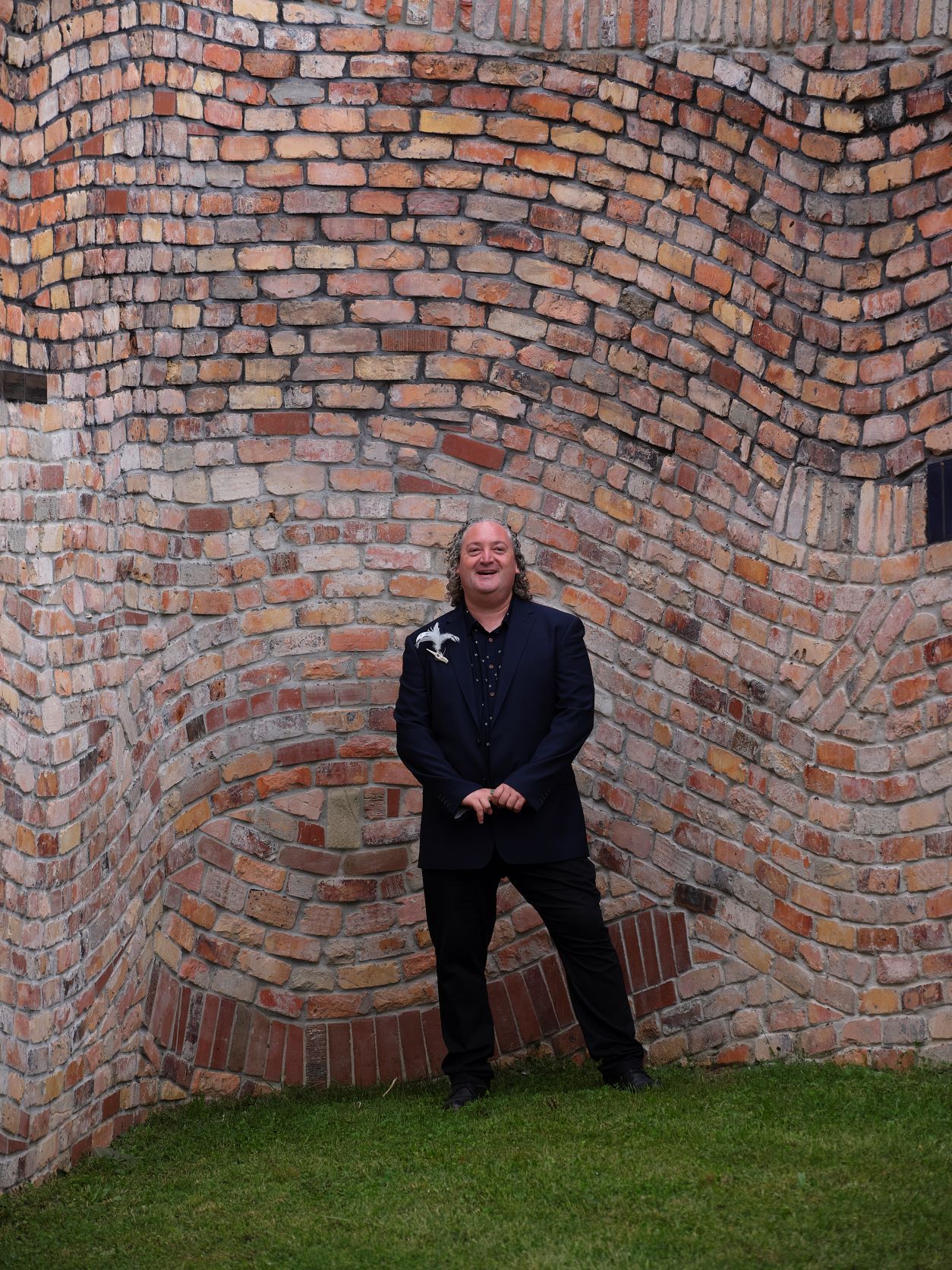Meet the driving forces behind the watershed Wairau Māori Art Gallery
When Friedensreich Hundertwasser made Aotearoa his home in the 1970s, buying property in the Bay of Islands, he was one of Austria’s most famous avant-garde artists, and an architect considered “the Gaudi of Vienna”.
Visitors to the Austrian capital will have seen Hundertwasser House, his most famous architectural work, with its organic, irregular structure and undulating lines that evoke the natural landscape. Here many of us may have seen a mini version: the Hundertwasser Public Toilets on the main street of Kawakawa, covered in the artist’s signature multi-coloured tile collages.
The Toilets were completed in 1999 before his death in 2000. But six years earlier, he proposed plans for an art centre , one that included a dedicated gallery for Māori art, something that was integral to his vision for the last museum in his name. Now, 22 years after his death, the Wairau Māori Art Gallery, housed within the Hundertwasser Centre in Whangārei, will open on February 20.
In Northland, Hundertwasser was known by locals as Freidrich or the man in the odd socks. He envisioned a harmonious relationship between nature and humans, and so identified strongly with Māori values, particularly around care of the environment.
“Hundertwasser was about the land and the landscape. He was interested in being authentic and having meaningful dialogue with those things,” says Nigel Borell (Pirirakau, Ngāti Ranginui, Ngāi Te Rangi and Te Whakatōhea), curator of Wairau’s inaugural exhibition.
“He reminds me of Gottfried Lindauer. They both came here from another part of the world and didn’t have the same baggage that the European settlers who came before them did. They were both artists who were quite philosophical about their relationship with the land and being in tune with what that might mean for Māori. Hundertwasser wasn’t just respectful, he valued these things and saw them as important.”

Acknowledging Hundertwasser’s vision, kaumātua Dr Patu Hohepa chose “wairau” as the name – the te reo Māori transliteration of Hundertwasser, or 100 waters. “In te ao Māori the notion of multiple waters has deep symbolic meaning, water being the basis of all living things,” says visual artist and chair of the gallery’s charitable trust board Elizabeth Ellis (Ngāpuhi Ngāti Kuta, Ngāti Porou Te Whanau a Takimoana, Ngāi Tane).
The trust, an independent and autonomous entity to Hundertwasser Art Centre, manages Wairau. Members include Whangārei hapu and iwi, experienced Māori artists , gallery directors (including Tim Melville), arts administrators, educators and curators, including Borell, who made headlines last year for unexpectedly resigning from his position as head Māori art curator after putting together Toi Tū Toi Ora, Auckland Art Gallery Toi o Tāmaki’s largest exhibition in the gallery’s 132-year history, featuring more than 300 pieces of Māori art.
A few months later, he was recognised for changing the landscape of New Zealand art with the Arts Foundation’s inaugural He Momo – A Moment In Time Award. Wairau will continue that legacy.
“Māori have a human history that is distinctive and defining of Aotearoa,” says Ellis.
“At the core of any expression of Māori art is an assertion of whakapapa, of genealogical connection, a connection to land, a connection to the physical and metaphysical worlds that make up Māori knowledge and ontology. It is also inevitably shaped by Māori colonial experience and how the culture has adapted to change and adversity with innovative and prophetic acts of resilience.”
The inaugural show, Puhi Ariki, will introduce Wairau’s intentions and aspirations, reassuring the public and stakeholders that the space is there for them and to reflect the best contemporary Māori art on offer.
“I wanted to present a strong and very Northland-centric opening message, an inter-generational exhibition starting with some of the iconic first-generation contemporary Māori artists alongside some of our established and recent Māori art stars to speak powerfully to the importance of Te Tai Tokerau and Ngāpuhi artists to the legacy of Māori art,” says Borell.
With the waterway adjacent to the gallery outside and the cultural importance to the site taken into consideration, the title plays on ideas of navigation and plotting future pathways.
“Puhi Ariki, a metaphor about balance, order, prosperity, and growth, pays tribute to the importance of the albatross plumes that adorn sailing waka,” explains Borell.
“Puhi-maroke [the dry plume] sits above the puhi-mākū [the wet plume] at the tauihu [bow] of the waka. At the rear found atop of the taurapa [stern post] is the plume named puhi-ariki. It is said that when the waka moves through the water with ease and in unison the puhi-ariki plumage shall glide along the water. Our artists are sitting in the waka bringing forward that new beginning for arts and culture in Whangārei.”
It’s also a direct reference to Ngāpuhi's ancestor, Puhi Ariki.
Where possible, Wairau supported the commissioning of new work and where more appropriate, Borell chose a moment which exempli es each artist’s connections to the North. The nine artists featured show a range of mediums. There are collection works from Ralph Hotere (Te Aupōuri, Te Rarawa), Selwyn Muru (Te Aupōuri, Ngāti Kurī), and John Miller’s (Ngāpuhi, Ngaitewake-ki-Uta) archival photos that showcase the 1974 launch of a very important waka in the North.
Meanwhile “contemporary weaver Te Hemo Ata Henare (Ngāti Kahu,Ngāti Hine, Te Whakatōhea), the only artist based in Whangārei, is making an amazing new suspended installation piece,” says Borell.
While Wairau is starting with artists connected to the North, Borell says that with three shows each year, the gallery hopes to bring a mix of presentations, from group to solo shows that celebrate the breadth of contemporary Māori art.
“Our programming will be diverse, it will be rich and it will have the contour lines of something creative and interesting to see each time.”
Nadine Rubin Nathan